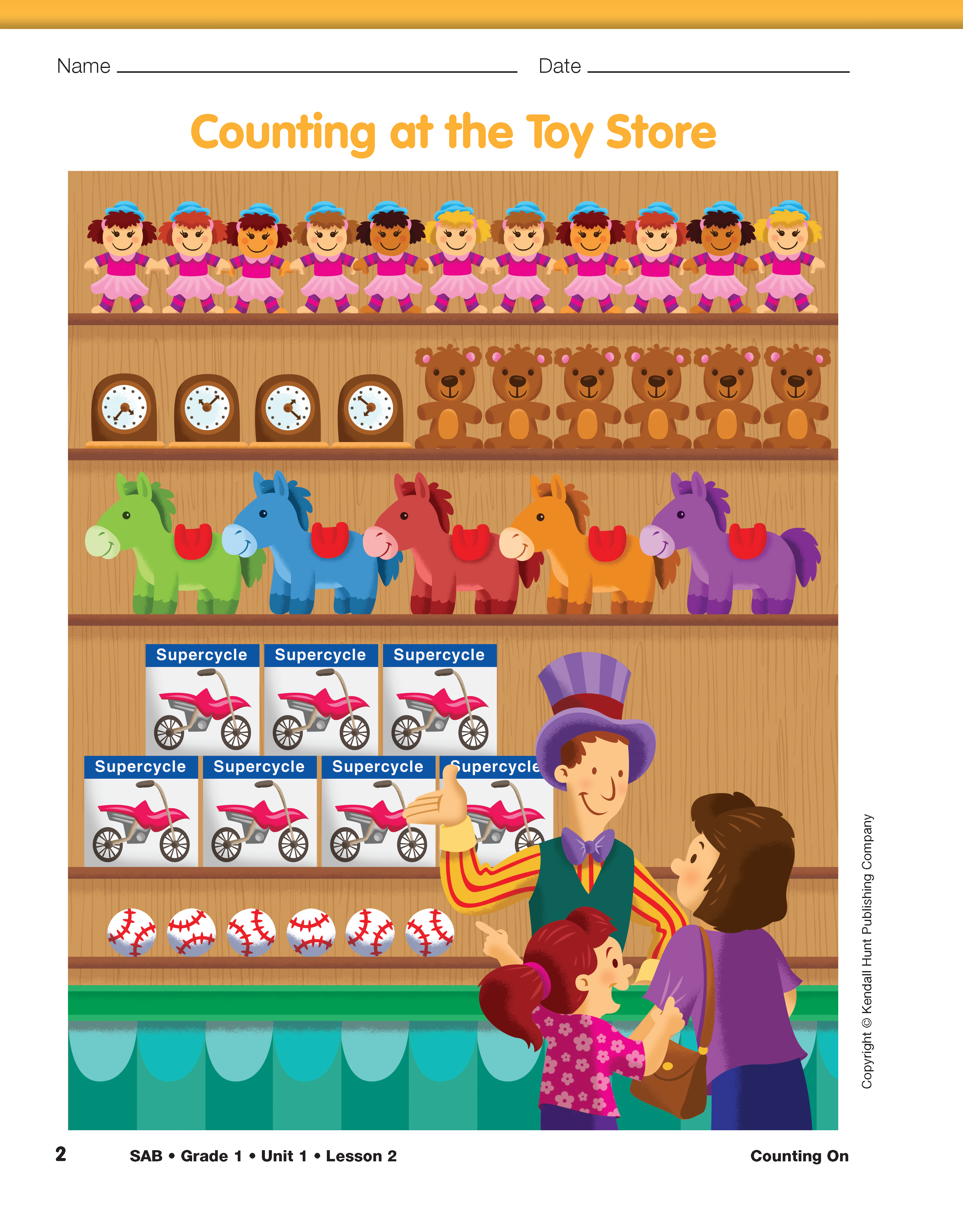Refer students to the Counting at the Toy Store
pages. Ask students to count the objects in each row
in the picture and write the totals in the table.
Encourage them to use the counting-on strategy
when it makes sense. Use a display of the Counting
at the Toy Store page to discuss students' counting
strategies..
-
How did you count the number of clocks in the toy store?
(Possible responses: I just looked and saw there were 4 clocks; I counted each one.)
-
You said that you just saw four clocks. Did you count other toys this way?
(Possible response: I could see there were 3 teddy bears without counting all of them and then I counted on, 4, 5, 6.)
-
How did you count the dolls on the top shelf?
(Possible response: I counted each doll as I did not see a small number easily.)
-
How did you count the supercyles?
(Possible response: I could easily see the four and then counted on 5, 6, 7.)
-
Did you use the counting-on strategy to count any of the other toys?
(Possible response: the balls, horses, and teddy bears)
-
How many jump ropes are in the toy store?
(zero)
-
How do you know?
(I do not see any in the picture.)
Ask students to look at the data table and the picture of the toy store.
-
Which toys did we have more than 5 of?
(teddy bears, supercycles, dolls, balls)
-
Were there more balls or horses?
(balls)
-
Which object did we have none of?
(dollhouse)
-
What number did we put on the data table that shows the number of dollhouses?
(0)
Assign the Peter's Pockets Assessment Master.
Use the Peter's Pockets Assessment Master to assess
students' abilities to count a collection of objects [E1, E2, E4]
and write the symbols [E5].
Use the Number Book: Dot Patterns 0–12 Masters to provide
targeted practice with counting strategies and writing the
numbers 0–12 [E5].

















